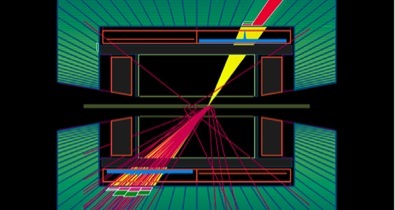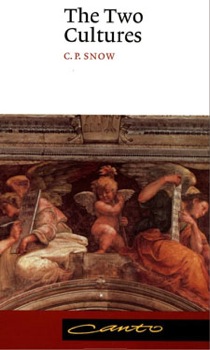 Cover of "The Two Cultures" by novelist/scientist C. P. Snow which discussed the intellectual gulf between "literary intellectuals"
and scientists.
Cover of "The Two Cultures" by novelist/scientist C. P. Snow which discussed the intellectual gulf between "literary intellectuals"
and scientists.
 Artist's impression of a multi-throat Calabi-Yau space.
Artist's impression of a multi-throat Calabi-Yau space.
 Cover from "Modern Supersymmetry".
Cover from "Modern Supersymmetry".
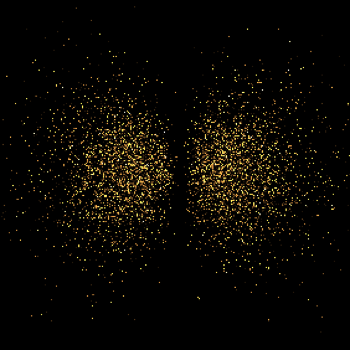 Probability distribution for an electron in an n=2, l=1, m=0 hydrogen atom.
Probability distribution for an electron in an n=2, l=1, m=0 hydrogen atom.
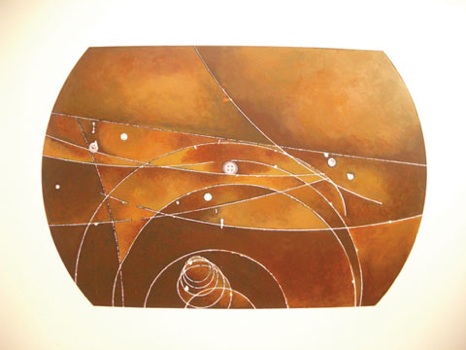 Bubble Chamber 1, by Lylie Fisher
Bubble Chamber 1, by Lylie Fisher
 Box of Axion laundry detergent, the namesake of the axion particle.
Box of Axion laundry detergent, the namesake of the axion particle.
 Aerial view of Geneva, the red circle indicates the location of the underground tunnel housing CERN's Large Hadron Collider (LHC).
Aerial view of Geneva, the red circle indicates the location of the underground tunnel housing CERN's Large Hadron Collider (LHC).
 The cover for the TASI 2004 summer school proceedings.
The cover for the TASI 2004 summer school proceedings.
 Cosmic microwave backround radiation as measured by WMAP, animation by Max Tegmark.
Cosmic microwave backround radiation as measured by WMAP, animation by Max Tegmark.
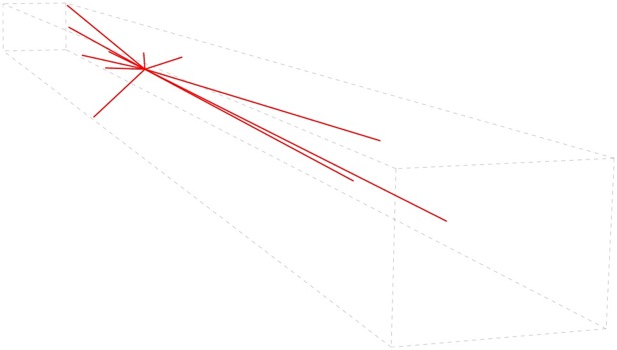 In quantum chromodynamics, heavy particles decay into sprays of lighter particles called jets.
In quantum chromodynamics, heavy particles decay into sprays of lighter particles called jets.
 As two particles collide at higher energies the Coulomb field of one undergoes a
relativistic compression, so that at velocities near the speed of light, the field lines
are compressed into a shock wave.
Away from the shock wave there is essentially no scattering, everything happens as the rest particle crosses the shock wave.
As two particles collide at higher energies the Coulomb field of one undergoes a
relativistic compression, so that at velocities near the speed of light, the field lines
are compressed into a shock wave.
Away from the shock wave there is essentially no scattering, everything happens as the rest particle crosses the shock wave.
More info.
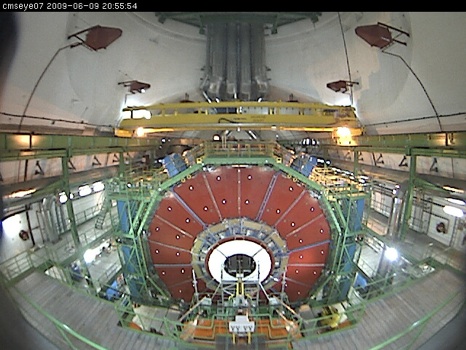 Webcam view of CMS construction at CERN.
Webcam view of CMS construction at CERN.
 Albert Einstein
Albert Einstein
 Part of the CMS endcap under construnction at CERN.
Part of the CMS endcap under construnction at CERN.
 Illustration from "Modern Supersymmetry". The purple peaks show the gauge coupling of the Seiberg-Witten theory as a function of the moduli space; the associated tori are shown in yellow. The quantum deformed moduli space of SUSY QCD is shown in turquoise. A slice of anti-de Sitter space is shown in orange.
Illustration from "Modern Supersymmetry". The purple peaks show the gauge coupling of the Seiberg-Witten theory as a function of the moduli space; the associated tori are shown in yellow. The quantum deformed moduli space of SUSY QCD is shown in turquoise. A slice of anti-de Sitter space is shown in orange.

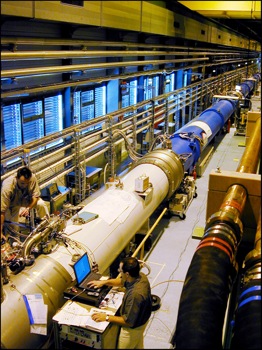 String test of the Large Hadron Collider beam.
String test of the Large Hadron Collider beam.
 Photons (red lines) streaming from a supernova to Earth. A photon may interact with the
intergalactic magnetic field (green line) and turn into an axion (blue line) which cannot be easily detected, and may even pass through the Earth.
Photons (red lines) streaming from a supernova to Earth. A photon may interact with the
intergalactic magnetic field (green line) and turn into an axion (blue line) which cannot be easily detected, and may even pass through the Earth.
 In conformal theories with large interaction strengths heavy particles decay into a spherical spray of lighter particles.
In conformal theories with large interaction strengths heavy particles decay into a spherical spray of lighter particles.
 The Flammarion woodcut shows a fanciful image
of the workings of the cosmos.
The Flammarion woodcut shows a fanciful image
of the workings of the cosmos.
